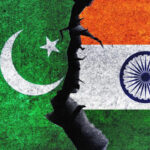“It is our expectation that the Chinese side will sincerely work with us for complete disengagement and de-escalation, and full restoration of peace and tranquillity in the border areas at the earliest, as agreed to by the Special Representatives,” Ministry of External Affairs spokesperson Anurag Srivastava said.
India called on China to work “sincerely” on the disengagement plan at the Line of Actual Control (LAC) as agreed to by both sides, amidst concerns that the disengagement process at the Line of Actual Control has slowed down, after People’s Liberation Army (PLA) soldiers failed to withdraw from the ridges of the “Finger” areas around the Pangong Tso lake.
“It is our expectation that the Chinese side will sincerely work with us for complete disengagement and de-escalation, and full restoration of peace and tranquility in the border areas at the earliest, as agreed to by the Special Representatives,” said Ministry of External Affairs (MEA) spokesperson Anurag Srivastava on Thursday.
“The conduct of Chinese forces this year, including the deployment of a large body of troops and changes in behaviour, accompanied by unjustified and untenable claims, has been in complete disregard of all the mutual agreements,” Mr. Srivastava said, striking a stern note on the situation, adding that India would not accept “any unilateral attempts to change the status quo along the LAC”.
Meanwhile, Indian and Chinese officials are expected to meet for a record third time in a month on Friday, for a virtual conference of the ‘Working Mechanism for Consultation and Coordination on India China Border Affairs’ (WMCC) grouping, sources said. The WMCC, which normally has only annual or bi-annual meets, has already met on June 24 and July 10 this year, while the MEA confirmed that the next meeting is expected “soon”. However, the MEA declined to respond to a question on whether holding the WMCC meeting so soon after the previous meeting indicated that there is a problem in the disengagement schedule.
Based on the consensus reached at the third round of Corps Commanders talks on June 30, Indian Army and PLA soldiers have disengaged from stand-off points patrolling Galwan and Gogra, and have disengaged “partially” at Hot Springs and Pangong Tso, military sources said. At Pangong Tso, Chinese troops reportedly pulled back from the base of Finger 4, and moved to Finger 5, but they continue to be present in smaller numbers on the ridgelines of Finger 4, contrary to the agreement. Prior to the stand-off, Indian had maintained that it held the areas up to Finger 4, and its claims lie up to Finger 8, as per the alignment of the LAC. China claims land up to Finger 2.
Further steps on disengagement were discussed at the fourth round of Corps Commander talks on July 14, but there has been no progress on them since with the first phase of disengagement is still incomplete, said the sources.
Last week, addressing troops at Lukung near Pangong Tso during a visit to Ladakh, Defence Minster Rajnath Singh had stated that the progress in the talks with China should lead to a resolution of the issue, but stressed that there was no guarantee as “to what extent” the nearly three month long stand-off would be resolved.
LAC standoff | India expects China to work sincerely on disengagement plan
“It is our expectation that the Chinese side will sincerely work with us for complete disengagement and de-escalation, and full restoration of peace and tranquillity in the border areas at the earliest, as agreed to by the Special Representatives,” Ministry of External Affairs spokesperson Anurag Srivastava said.
India called on China to work “sincerely” on the disengagement plan at the Line of Actual Control (LAC) as agreed to by both sides, amidst concerns that the disengagement process at the Line of Actual Control has slowed down, after People’s Liberation Army (PLA) soldiers failed to withdraw from the ridges of the “Finger” areas around the Pangong Tso lake.
“It is our expectation that the Chinese side will sincerely work with us for complete disengagement and de-escalation, and full restoration of peace and tranquility in the border areas at the earliest, as agreed to by the Special Representatives,” said Ministry of External Affairs (MEA) spokesperson Anurag Srivastava on Thursday.
“The conduct of Chinese forces this year, including the deployment of a large body of troops and changes in behaviour, accompanied by unjustified and untenable claims, has been in complete disregard of all the mutual agreements,” Mr. Srivastava said, striking a stern note on the situation, adding that India would not accept “any unilateral attempts to change the status quo along the LAC”.
Meanwhile, Indian and Chinese officials are expected to meet for a record third time in a month on Friday, for a virtual conference of the ‘Working Mechanism for Consultation and Coordination on India China Border Affairs’ (WMCC) grouping, sources said. The WMCC, which normally has only annual or bi-annual meets, has already met on June 24 and July 10 this year, while the MEA confirmed that the next meeting is expected “soon”. However, the MEA declined to respond to a question on whether holding the WMCC meeting so soon after the previous meeting indicated that there is a problem in the disengagement schedule.
Based on the consensus reached at the third round of Corps Commanders talks on June 30, Indian Army and PLA soldiers have disengaged from stand-off points patrolling Galwan and Gogra, and have disengaged “partially” at Hot Springs and Pangong Tso, military sources said. At Pangong Tso, Chinese troops reportedly pulled back from the base of Finger 4, and moved to Finger 5, but they continue to be present in smaller numbers on the ridgelines of Finger 4, contrary to the agreement. Prior to the stand-off, Indian had maintained that it held the areas up to Finger 4, and its claims lie up to Finger 8, as per the alignment of the LAC. China claims land up to Finger 2.
Further steps on disengagement were discussed at the fourth round of Corps Commander talks on July 14, but there has been no progress on them since with the first phase of disengagement is still incomplete, said the sources.
Last week, addressing troops at Lukung near Pangong Tso during a visit to Ladakh, Defence Minster Rajnath Singh had stated that the progress in the talks with China should lead to a resolution of the issue, but stressed that there was no guarantee as “to what extent” the nearly three month long stand-off would be resolved.






NO COMMENT